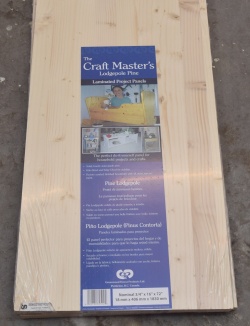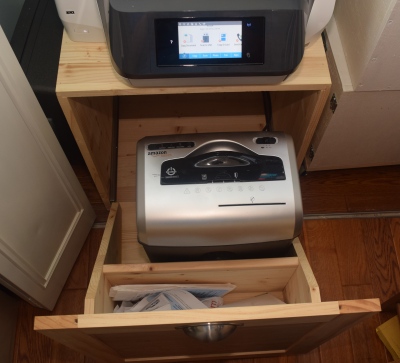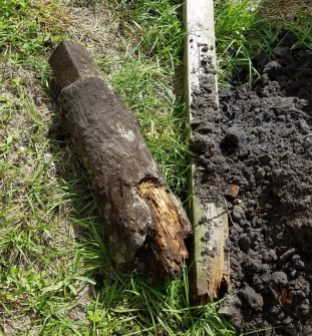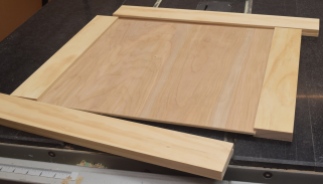I am keeping with the printer theme, but this is the 2d paper chewing variety. Our old printer was on the fritz, so I upgraded to a more professional model that does document scanning and yada yada. It has been over a month and it prints well, scans fast, and is cheaper to operate than the last one. It is quite big though, and the old location in the closet isn’t going to cut it anymore. I need to be able to get to the top and have lots of room to flip up the scanner. We are gonna need another cabinet.
 I wanted to build this quickly so I could clean up our office a bit. Plywood is what I have used on many of my previous shop cabinets. It looks decent out in the garage, but I wanted something nicer for inside the house. Edge banding is a possibility, but I wanted to try something else. This product is available at most home centers. It is pre-made laminated pine boards. The price is pretty reasonable and it has a nice rustic look while still looking better than plywood. Never buy it. The thickness varied from board to board, and once I cross cut it there was a lot of warpage.
I wanted to build this quickly so I could clean up our office a bit. Plywood is what I have used on many of my previous shop cabinets. It looks decent out in the garage, but I wanted something nicer for inside the house. Edge banding is a possibility, but I wanted to try something else. This product is available at most home centers. It is pre-made laminated pine boards. The price is pretty reasonable and it has a nice rustic look while still looking better than plywood. Never buy it. The thickness varied from board to board, and once I cross cut it there was a lot of warpage.
Consider yourself warned. I built a basic box using rabbeted edges, glue, and brad nails. The thickness differences made doing a proper rabbet really tough, and the warping kept the joints from being tight.
I did a basic framed panel door to go across the front opening. My issues continued, I cut the panel right at the edge of too short. It will work, but I have to be careful to prevent it from shifting and showing a gap. I used some of the left over laminated material to build a pull out drawer. Cutting at the angle relieved more stress and showed a lot of bad warping.
For a finish I decided to try out a home built shellac. Fine woodworking had a decent article and video on making your own and application. I like it! This is kind of a big project for wiping, but it was easy to mix, went on really fast, and didn’t alter the color too much. I used a very blonde shellac. Next time I will do something darker and see how it works with soft woods like pine.

The screw-ups keep on coming. I cut the panel groove all the way through the side board. I should have stopped it. Not only does it look bad, but it compromises the strength of the pocket hole screws. They don’t have as much to bite into.
The drawer went in on a set of full extension metal drawer slides. This will house my paper shredder and paper storage.
The warping of everything showed up in the front door. Tight on one side, slightly open on the other. Oh well, it is going in a closet.

Drawer at full extension

Drawer Closed
Speaking of closet, here is the final resting place. It slides under the existing shelf nicely, and is short enough front to back so that you can close the closet door and conceal the printer. If you just need to make a few prints, the front area is accessible enough to do so. If you need to scan, the whole cabinet is on wheels, so you can just pull it out, do your work, then shove it back in.

The best part is what is housed inside. I put my shredder on the back side of the drawer, and used the front as paper storage. Now instead of a pile growing around the shredder it collects neatly here until I can get to it. My implementation and the materials leave a lot to be desired, but it still looks decent, and is super functional. I learned, didn’t get hurt, and got a useful piece of furniture. I’ll call that a win.

























































